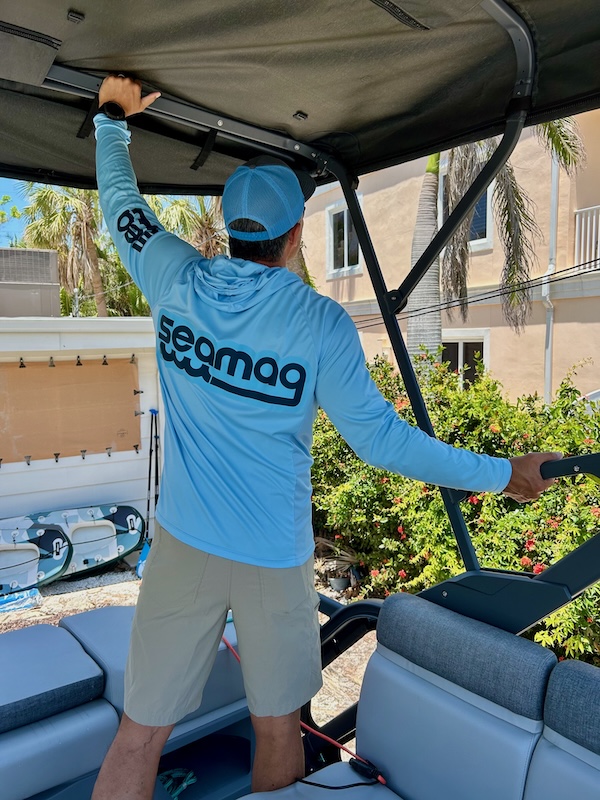Top 5 Boat Loan Rate Offers: Best Financing Options for 2024
Boat loans help people buy boats without paying the full price upfront. These loans work like car loans, letting buyers spread out payments over time. Many lenders offer boat loans with different rates and terms.

The best boat loan rates in 2024 range from about 9% to 29% APR. Rates depend on factors like credit score, loan amount, and loan term. Some lenders offer no down payment options or special deals for certain buyers. Shopping around can help find the best boat loan for each person's needs.
1) Low Fixed Rate from Navy Federal Credit Union
Navy Federal Credit Union offers competitive fixed-rate boat loans. Their current rate for a 30-year loan is 6.125% interest with a 6.268% APR.
This rate applies to a $300,000 loan amount. The monthly payment for this loan would be $1,822, not including taxes and insurance.
Navy Federal includes a 1% loan origination fee in their rates. Borrowers can choose to waive this fee in exchange for a 0.25% increase in the interest rate.
It's important to note that the actual payment obligation will be higher than the stated monthly payment. This is because taxes and insurance are not factored into the quoted amount.
Navy Federal Credit Union is known for providing flexible terms and low APRs on various vehicle loans, including boats. Their rates are often competitive compared to other lenders in the market.
2) Competitive Rates by USAA
USAA offers competitive boat loan rates for military families and members. Their loans can go up to $150,000 with terms as long as 20 years.
USAA's fixed interest rates start at 4.25% APR. This rate is quite attractive compared to other lenders in the current market.
For a new boat loan on 2023-2025 models, USAA provides a 120-month option with a 10.59% APR. This results in monthly payments of $13.54 per $1,000 borrowed.
USAA also has a Performance First Savings Account. It offers better rates for those who keep $50,000 or more in their account.
The bank is known for its award-winning service. They allow people to apply for boat loans online, making the process quick and easy.
USAA's boat financing options cater to different needs. Whether buying a new or used boat, their range of loan terms can fit various budgets.
3) Flexible Payment Options by LightStream
LightStream offers boat loans with flexible payment options to suit different budgets. Borrowers can choose loan terms ranging from 24 to 144 months.
This wide range of terms allows customers to select a repayment schedule that fits their financial situation. Shorter terms generally mean higher monthly payments but less interest paid overall.
Longer terms spread out the payments, making them more affordable month-to-month. However, they result in more interest paid over time.
LightStream provides loan amounts from $5,000 to $100,000. This flexibility lets borrowers finance anything from a small fishing boat to a large yacht.
The company offers fixed interest rates, which keep monthly payments consistent throughout the loan term. Rates start as low as 6.99% APR with AutoPay.
LightStream does not charge fees for their boat loans. There are no origination fees, closing costs, or prepayment penalties.
Customers can also benefit from an interest rate discount when they set up automatic payments. This feature helps ensure timely payments and can save money over the life of the loan.
4) Low APR Offers from Bank of America
Bank of America provides competitive APR offers for boat loans. Their rates start as low as 6.24% for well-qualified borrowers.
The bank offers flexible loan terms, ranging from 48 to 240 months. This allows customers to choose a repayment plan that fits their budget.
Bank of America's boat loans can cover up to 100% of the purchase price or value of the vessel. This feature helps buyers who may not have a large down payment saved.
The bank also offers rate discounts for existing customers. Those with Bank of America checking or savings accounts may qualify for lower APRs on their boat loans.
To get the best rates, applicants should have a good credit score, typically 700 or higher. A stable income and low debt-to-income ratio also help secure better terms.
Bank of America provides an online application process for boat loans. This makes it easy for customers to apply and receive a decision quickly.
5) Special Discounts by Wells Fargo
Wells Fargo offers special discounts on boat loans for certain customers. These discounts can help borrowers save money on interest over the life of their loan.
One discount is for existing Wells Fargo customers. Those with a checking or savings account may qualify for a rate reduction on their boat loan.
Military members and veterans can also get discounted rates from Wells Fargo. This applies to active duty, reserve, and retired service members.
Wells Fargo sometimes runs seasonal promotions with temporarily lowered rates. These deals often coincide with boat show events or the start of boating season.
Borrowers with excellent credit scores may receive the best rates and terms. Wells Fargo rewards those with strong financial profiles through more favorable loan offers.
To get the most up-to-date information on Wells Fargo's boat loan discounts, interested buyers should contact a loan officer directly. Rates and offers can change frequently based on market conditions.
Understanding Boat Loan Rates
Boat loan rates vary based on several key factors. Lenders offer both fixed and variable rate options, each with its own pros and cons.
Factors Affecting Boat Loan Rates
Credit score plays a big role in boat loan rates. Higher scores often lead to better rates. Loan term length also impacts rates. Shorter terms usually mean lower rates but higher monthly payments.
The boat's age and value matter too. Newer, more expensive boats may qualify for lower rates. Down payment size can affect rates as well. Larger down payments can lead to better terms.
Some lenders offer rate discounts. Setting up autopay or having a checking account with the lender might lower your rate.
Fixed vs. Variable Rates
Fixed rates stay the same for the entire loan term. This makes budgeting easier since payments don't change. Current fixed boat loan rates range from about 6% to 30%, depending on the borrower's qualifications.
Variable rates can go up or down based on market conditions. They often start lower than fixed rates but may increase over time. This can make long-term costs harder to predict.
Some lenders offer hybrid options. These combine a fixed rate period with a variable rate period. This can provide initial stability with potential savings later on.
Choosing the Right Boat Loan for You
Picking a boat loan requires careful consideration of your finances and comparing options from different lenders. The right loan will fit your budget and offer favorable terms.
Evaluating Your Financial Situation
Look at your income, expenses, and savings to determine how much you can afford to borrow. Calculate the total cost of boat ownership, including maintenance, insurance, and storage. Consider your credit score, as it affects loan approval and interest rates.
Make a budget for monthly loan payments. Don't forget to account for unexpected costs. A good rule is to keep boat-related expenses under 10% of your income.
Think about the down payment you can make. Larger down payments often lead to better loan terms. Some lenders may require 10-20% down.
Comparing Different Lenders
Research multiple lenders to find the best deal. Banks, credit unions, and online lenders all offer boat loans. Check interest rates, loan terms, and fees from each.
Look for lenders that specialize in marine financing. They may have more flexible options for different boat types and ages.
Compare APRs to understand the true cost of each loan. Ask about prepayment penalties and options for refinancing later.
Read customer reviews and check lender ratings with the Better Business Bureau. Good customer service is important for a smooth loan process.
Tips for Securing the Best Rates
Getting a good boat loan rate can save you money over time. Two key ways to improve your chances of securing low rates are boosting your credit score and negotiating with lenders.
Improving Your Credit Score
Check your credit report for errors and dispute any you find. Pay down credit card balances to lower your credit utilization ratio. Aim to use less than 30% of your available credit. Make all loan and credit card payments on time each month.
Set up automatic payments to avoid missed due dates. Keep old credit accounts open to maintain a longer credit history. Apply for new credit sparingly, as hard inquiries can temporarily lower your score.
Consider becoming an authorized user on a family member's credit card with a good payment history. This can help build your credit faster.
Negotiating Terms with Lenders
Shop around and get quotes from multiple lenders. Compare interest rates, fees, and loan terms. Use competing offers as leverage when negotiating. Ask lenders if they can match or beat other rates you've been offered.
See if making a larger down payment could lower your rate. A bigger down payment reduces the lender's risk. Look into rate discounts for setting up automatic payments or having other accounts with the lender.
Ask about shorter loan terms. While monthly payments may be higher, you'll often get a lower rate and pay less interest overall. Be prepared to explain any past credit issues and how you've improved your finances since then.
Frequently Asked Questions
Boat loan rates depend on several factors. Your credit score, loan term, and the type of boat you're buying all play a role.
Lenders also look at your income and debt levels when setting rates.
What factors determine the interest rate on a boat loan?
Lenders consider your credit score, income, and debt-to-income ratio. The loan amount, term length, and type of boat also affect the rate.
New boats often have lower rates than used ones. Some lenders offer better rates for larger loan amounts.
How does my credit score impact boat loan rates?
Credit scores greatly influence boat loan rates. Higher scores usually mean lower rates.
Borrowers with excellent credit may get rates around 6-7%. Those with fair credit might see rates of 14% or higher. Some lenders have minimum credit score requirements.
What are the pros and cons of choosing a longer-term boat loan vs. a shorter-term loan?
Longer loans have lower monthly payments but cost more in total interest. Shorter loans mean higher monthly payments but less total interest paid.
Longer terms may make expensive boats more affordable. Shorter terms help you pay off the loan faster.
Can you negotiate boat loan rates with financial institutions?
Some lenders may be open to rate negotiations. Having good credit and a strong financial profile helps.
Shopping around and getting quotes from multiple lenders gives you leverage. Being ready to make a larger down payment can also help you get a better rate.
How do used boat loan rates compare to new boat loan rates?
Used boat loans typically have higher rates than new boat loans. The difference is often 1-2 percentage points.
Lenders see used boats as riskier. New boats have warranties and known histories. Some lenders may not offer loans for very old boats.
What are possible fees or additional costs associated with taking out a boat loan?
Common fees include origination fees, processing fees, and title fees. Some lenders also charge prepayment penalties. You may need to pay for boat insurance. Registration fees and taxes are other costs to consider.
Before signing, ask lenders for a full list of fees.
Charlie is Editor-in-Chief of Sea Magazine







